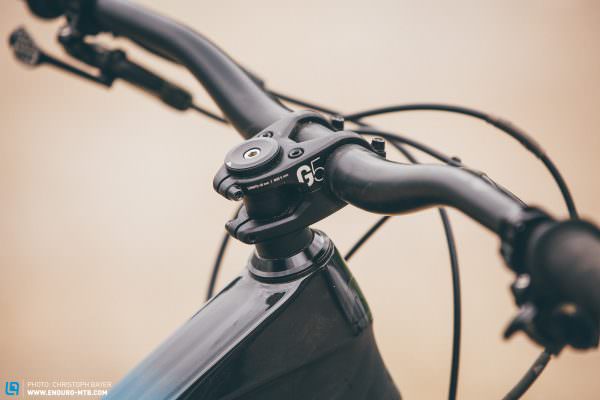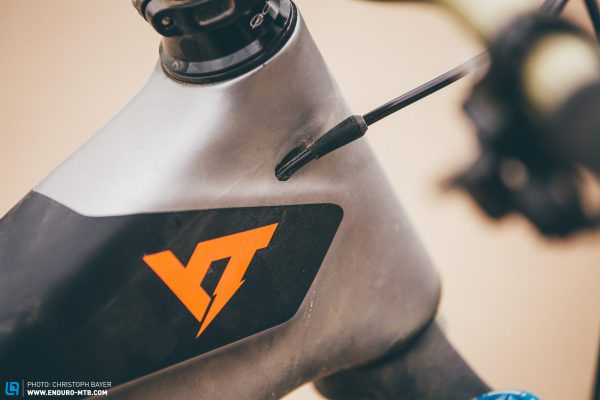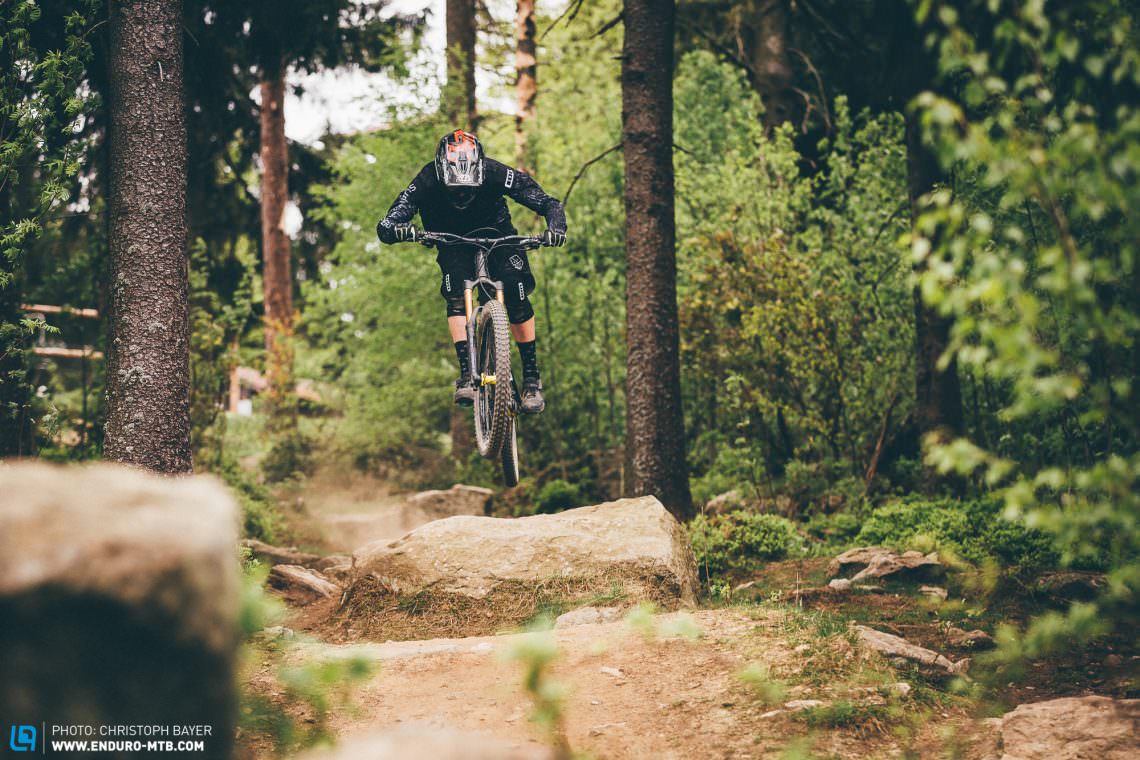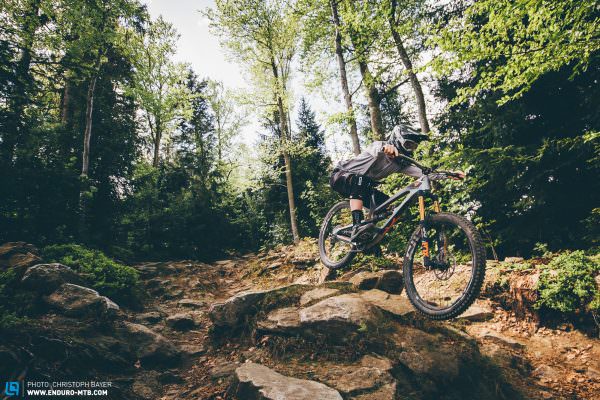Big air, big drops and unforgiving rock gardens – if you like it rough, you’re going to need the right bike. Fortunately, YT and Canyon have recently released two new bikes for precisely that type of riding, the brand new Canyon Torque and the fundamentally revised YT CAPRA. On paper, they’re very similar, but how do they compare in the real world?

Not so long ago, the only way you got a bike with 180 mm of travel to the top of a descent was either in a lift, by shuttle or by pushing. With the advent of ever more potent enduro bikes, freeride, as it was called, has all but disappeared. But 180 mm travel bikes like the Canyon Torque or the YT CAPRA are heralding a renaissance – and they’re far superior to their predecessors.



Canyon Torque CF 9.0 Pro

Fork FOX 36 Factory
Rear shock FOX Factory Float X2
Drivetrain SRAM X01 Eagle
Brakes SRAM Code RSC
Wheels Mavic Deemax Pro
Tires Mavic Claw Pro XL 2.5/Charge Pro XL 2.5 (f/r)
Stem Canyon G5
Handlebar Canyon G5 Carbon
Seatpost RockShox Reverb Stealth
Weight 14.10 kg
Price € 4,999
For a long time, the Canyon Torque was the bike-park bike par excellence. With plenty of travel, a durable frame and a fair price, it was the first choice for anyone in need of a bike with maximum downhill performance – but climbing always proved to be a very sweaty affair. That has all changed with the version presented last year. The bike still offers a full 180 mm of travel at the front and 175 mm at the rear. Regarding looks, it joins the newly designed line-up and bridges the gap between their trail and their downhill bike, the Spectral and the Sender. It is available in both aluminium and carbon versions, but all models feature an aluminium rear linkage, including the € 4,999 top of the range model we reviewed.

We like the colour gradient of the Canyon Torque. The carbon front triangle looks very classy, but the aluminium rear end doesn’t quite match the design.

With the quick-release axle developed by Canyon, the lever disappears inside the shaft once tightened. Clean look: check; quick operation: check!

There is nothing to complain about with the dimensions of the cockpit. However, the stem looks a bit bulky and of lesser quality than the Renthal on the CAPRA.

The Mavic Charge XL tyre doesn’t do the Torque justice. It lacks grip and lateral control, especially in wet conditions.
YT CAPRA 27 CF Pro Race

Fork FOX 36 Factory
Rear shock FOX Factory Float X2
Drivetrain Shimano XTR
Brakes SRAM CODE Ultimate
Wheels e*thirteen TRSr Carbon
Tires e*thirteen TRSr/TRS+
Stem Renthal Apex
Handlebar Renthal Flatbar Carbon
Seatpost FOX Transfer Factory
Weight 13.90 kg
Price € 5,199
The YT CAPRA has always been an enduro bike that doesn’t shy away from the roughest terrain. With last year’s latest generation, YT not only presented a 29″ version but also offered a full 180 mm of travel on the top CAPRA 27 CF Pro Race model. Like its predecessor, the latest CAPRA is based on a V4L four-bar rear linkage and slots perfectly into YT’s line-up, between their downhill bike TUES and their trail bike JEFFSY. The top model tested by us is available for € 5,199.

Thanks to the short seat tube, riders can choose between at least two frame sizes. We opted for the bigger one.

The rubber plugs are designed to prevent dirt and moisture from getting into the frame, but unfortunately, they didn’t stay put

The frame of the YT CAPRA 27 CF Pro Race is oversized, which makes the bike look quite hefty. The weight of 14 kg, however, is surprisingly low.

YT uses a combination of Shimano and E-Thirteen components for the drivetrain of all CAPRA models. The drivetrain has a gear range of 511% and promises to be particularly reliable and tough.
The Geometry
On paper, the two bikes are very similar. They both have 27.5″ wheels, approx. 180 mm of travel, slack head angles of 65° and short chainstays, whereby the Torque’s 428 mm chainstays are 4 mm shorter than the CAPRA’s (432 mm). The most significant differences between the two bikes are the bottom bracket height, the reach and the seat tube length. With 15 mm more bottom bracket drop, the static position of the bb on the Torque is 7 mm lower in relation to the axles than on the CAPRA (8 mm). YT gives most riders a choice of two frame sizes thanks to a short seat tube. The long seat tube on the Canyon, however, left our 180 cm tall test riders with no choice other than the L. Regarding reach, the size L Torque with 460 mm is somewhere between the length of CAPRA in L (455 mm) and XL (475 mm). We chose the XL CAPRA.
| Bike (in L) | Canyon Torque CF 9.0 Pro | YT CAPRA 27 CF Pro Race |
|---|---|---|
| Seat tube | 455 mm | 450 mm |
| Top tube | 642 mm | 617 mm |
| Head tube | 135 mm | 120 mm |
| Head angle | 65° | 65° |
| Seat angle | 74° | 75° |
| Chainstay | 428 mm | 427 mm |
| BB Drop | 15 mm | 8 mm |
| Wheelbase | 1.219 mm | 1.219 mm |
| Reach | 460 mm | 455 mm |
| Stack | 636 mm | 617 mm |
Mission accomplished: Use your travel!

The Componentry
As we’ve come to expect from Canyon and YT, the quality of the spec on both bikes is exceptionally high-quality. Both bikes come with FOX Factory suspension, consisting of a 36 FLOAT Factory fork and an X2 shock, and both rely on the SRAM Code for braking power. YT even specced the SRAM “Ultimate” carbon brake levers – a configuration SRAM hasn’t made available to customers. For the wheels and tyres, YT uses E13 TRSr carbon wheels with matching tyres, and Canyon relies on Mavic tyres and Deemax Pro wheels. Unfortunately, the Mavic Charger Pro rear tyre lacks grip and tracking stability. The MAXXIS combination, standard on the cheaper Torque models, would be the better choice. Another unique feature is the choice in drivetrain: Canyon opted for a SRAM X01 Eagle, and YT chose a mix of Shimano XTR rear derailleur and shifter and an E13 crank and cassette – both systems were convincing in practice. While Canyon relies on its in-house cockpit, YT offers nicer Renthal components. Ten points to Canyon for the 170 mm RockShox Reverb dropper seat post. YT opted for a FOX transfer with 150 mm. Ultimately, you get a little more for your money with the YT despite the € 200 price difference.
Just send it! No problem with these bikes!


Before going down, you’ve got to go up
Before the bikes can prove what they’re made of on the downhill run, you have to get to the top of the hill. Despite the plush 180 mm travel suspension, both rear linkages were surprisingly neutral when pedalling. However, for long, technical uphills we recommend reaching for the climb switch on both shocks. The platform damping on the CAPRA is more pronounced than on the Torque, so you end up sagging less, and the rear suspension feels firmer. On the Torque we had to keep an eye on the pedals on technical climbs because of the low bb – you’re more likely to snag your pedals on rocks or roots than on the CAPRA. The seating position on the CAPRA is better too. With the slightly steeper seat tube angle your weight is placed centrally on the bike, which made steep climbs less of a burden – despite the significantly higher rolling resistance of the E13 tyres compared to the Mavics. Overall, for a bike of this class, the climbing performance of the Torque is very admirable and suitable for extended tours, however, this round goes to YT.

The main discipline: descending
Despite very similar values on paper, the differences in handling on descents are clearly noticeable – particularly with regards to the suspension. The rear end of the CAPRA feels quite a bit plusher than that of the Torque. The YT levels out rock gardens and floats over roots like you’re on a magic carpet. Nevertheless, the bike doesn’t sag or wallow unnecessarily. The Canyon, on the other hand, provides significantly more feedback from the ground and feels firmer overall, making it noticeably zippier and livelier. The Torque generates a lot of speed pumping through rollers on flowy trails. But if you’re coming in really hot and you mess up a line, it still offers more than enough reserves to compensate for rider errors.

Thanks to the plush suspension, coupled with the slightly longer geometry, the CAPRA pulls away from the Torque on steep, rough terrain. The bike permanently motivates the rider to go even faster and stay off the brakes. But the Canyon quickly catches up in fast switchbacks and tight sections, thanks to its agility. The low bottom bracket in combination with the high stack means you feel very integrated into the bike. Your weight is placed a little more to the rear, though, due to the short chainstays, so to keep the front wheel gripping you have to shift your weight forward a bit more than with the CAPRA.



On flowing trails, the Torque comes out on top, but the YT pulls past it on rowdy downhill tracks!
Unfortunately, both bikes could have done better regarding tyre choice. While we immediately replaced the Mavic tyres on the Canyon with a set of MAXXIS Minion DHR II because of a lack of grip and lateral control in wet conditions, we would only replace the E13 tyres with MAXXIS tyres when they’re worn out. What annoyed us about the E13 tyres was the high rolling resistance and the tall side knobs, which, when you’re cornering hard, cause the tyres to fold, especially on machine-made bike park trails. The remaining componentry on both bikes gave us no reason for complaint.

Conclusion
And the winner is? In the end, there can only be one winner, and in this duel, it’s the YT CAPRA 27 CF Pro Race. The CAPRA impresses with its very stable, balanced handling and the enormous reserves on rough tracks. Thanks to the short seat tube, almost all riders can choose between two frame sizes. If you’re looking for something that remains calm in the roughest terrain, and you also want to pedal uphill without having to fight the bike, we recommend going for the larger size. If you prefer more playful, agile handling, you should choose the smaller frame size. Otherwise, you can get the Canyon Torque CF 9.0 Pro, which is not a bad choice either, although it isn’t quite as comfortable on the climbs and it’s less composed in the rough. In return, you’ll have a bike that’s more agile and direct.

Did you enjoy this article? If so, we would be stoked if you decide to support us with a monthly contribution. By becoming a supporter of ENDURO, you will help secure a sustainable future for high-quality mountain bike journalism. Click here to learn more.
Words & Photos:









